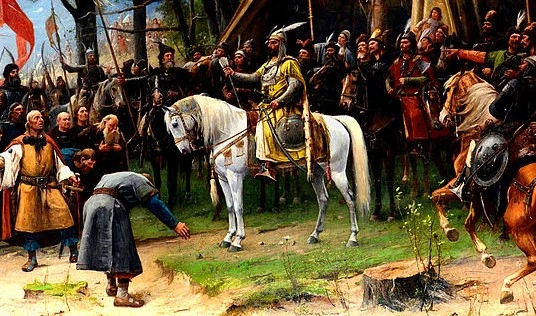Lost emperor discovered in Transylvania!
The coin bearing the name and image of Sponsianus was discovered in what is now Transylvania more than three hundred years ago, along with several others. In the second and third centuries BC, the western and southern parts of Transylvania belonged to the Roman province of Dacia.
“We found an emperor”
After it was deemed a fake, the coin was locked away in a museum cabinet. However, scratches on the coin, which can be seen under a microscope, prove that it was in circulation two thousand years ago. “In fact, we found an emperor. Experts had previously believed it to be a fictional person and had “erased” it from history. However, we believe he was a real person,” MTI quotes Paul Pearson, professor at University College London, as saying.
Ridiculous design?
The coin was part of a small hoard discovered in 1713. Until the mid-19th century, it was thought to be an original Roman coin, 24.hu reports. However, its simple design led to the assumption that it was the work of contemporary forgers. The final blow to Sponsianus’ coin was delivered by Henry Cohen, chief coin expert at the National Library of France (BNF), who said that these Roman coins were not only modern forgeries, but also poorly worked and “ridiculously designed”.
He remained out of literature until today
Other experts agreed with this, and Sponsianus has remained out of the literature until today. However, Professor Pearson, who saw photographs of the coin while researching for his book on the history of the Roman Empire, subjected it to meticulous scrutiny. The researchers examined the coins under a high-resolution microscope and found that there were indeed scratches on the coins, consistent with the movement they had undergone in the pouch.
Sponsanius and his military success
It is thought that Sponsianus was a military commander who crowned himself Emperor of Dacia. Around 260, the province was cut off from the rest of the Roman Empire, which was fragmented by epidemics and civil war. Sponsianus is thought to have assumed supreme command during the chaos and civil war and defended Dacia until order was restored and the Roman legions and administration withdrew from the province under the reign of Emperor Aurelian.
They probably printed their own money
In the interests of the functioning economy of the province, they may have chosen to issue their own money. This theory may explain why the coins examined differ from the coins commonly used in Rome. And because of the civil war, it was hard to know who the emperor was: in the absence of real Roman power, a supreme military commander was needed, and Sponsianus could take command when he needed to.

Read alsoSensational discovery! An 18th-century map may help find the secret tomb of Árpád, the Conqueror
Source: 24.hu, MTI
please make a donation here
Hot news
What happened today in Hungary – 26 July, 2024
Drama: number of births in a 20-year low in Hungary
Yay or nay? – 6 odd Hungarian delicacies that make our skin crawl
Budapest tourism “exploded” this past weekend
Container transport in Budapest may stop: How will this affect Hungarian economy?
Minister: Hungary will protect its territory by every means possible



